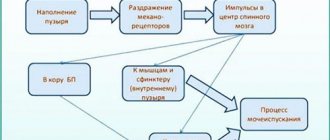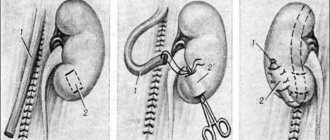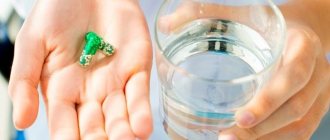Kidney prolapse (nephroptosis) is a condition in which the kidney becomes extremely mobile. Due to the displacement of the organ, pain occurs, blood circulation is impaired, pressure increases, and more severe diseases may develop in the future. As a rule, kidney prolapse develops with rapid loss of body weight and weakening of the supporting apparatus (the muscle tissue around the kidney that ensures its normal position). Most often, nephroptosis develops in young women. Treatment can be conservative and surgical.
Causes of nephroptosis
Treatment of nephroptosis begins with clarifying the true cause of the development of this pathological condition. These could be:
- severe weight loss in a short period of time;
- lower back injury accompanied by hematoma formation;
- physical labor that involves lifting weights.
More often, the pathology in question is diagnosed in women, so it is necessary to know not only the rules for treating nephroptosis, but also what threat this pathology poses to health.
Prices for osteopathic services
| SERVICE | ADULTS | FOR CHILDREN |
| Osteopath consultation | 2 500 | 2 500 |
| Osteopathic treatment session | 7 500 5 000 (4,500 with prepayment for a course of 7 procedures) | 7 500 5 000 (4,500 with prepayment for a course of 5 procedures) |
| Consultation with osteopath, head of the clinic, Lazareva N.G. | — | 3 000 |
| Osteopathic treatment session with the head of the clinic Lazareva N.G. | — | 7 000 (discount for prepayment of a course of 5 procedures) |
Signs of nephroptosis
Mild signs of nephroptosis lead to late diagnosis and difficult treatment. The only symptom that the patient can pay attention to is pain, which is periodic, paroxysmal or nagging in nature. Signs of nephroptosis may be mistaken for manifestations of cholecystitis or acute/chronic appendicitis. At the initial stage of the disease, the symptoms hardly bother the patient, and periodic pain in the lower back and lower abdomen is not paid attention to - they can always be attributed to overwork.
When grade 2 kidney prolapse develops, the pain syndrome becomes more intense, the person may even lose the ability to work, this leads to depression and loss of appetite. Next, urine retention occurs in the kidney, and the result is a significant increase in blood pressure.
What exercises should not be done with nephroptosis?
It is important to follow all doctor’s recommendations regarding performing exercise therapy for kidney prolapse. With this disease, it is forbidden to engage in active sports, in particular, you cannot jump or run. Lifting heavy objects should also be avoided.
Otherwise, this can cause severe complications, even to the point where the kidney comes off and requires immediate surgical intervention to save the patient’s life.
At the Urology Clinic named after. R.M. Fronstein specialists have the necessary knowledge in the treatment of nephroptosis. Many patients were cured of their illness after undergoing a course of therapy at this medical institution.
How to treat kidney prolapse
Nephroptosis is difficult to treat with conservative methods; the most effective treatment method is laparoscopic nephropexy. In general, patients can be given the following recommendations:
- The patient should avoid physical activity, shaking and jumping.
- Doctors prescribe wearing a special lumbar bandage, which is designed to fix the kidneys. Nephroptosis of 1-2 degrees can be corrected with the help of such a bandage, and in some cases completely cured. The bandage is put on in a supine position and strictly while exhaling.
- If the patient is underweight, then you will need to adhere to a special diet. Treatment for kidney prolapse will be much faster if a fatty layer appears around the kidneys.
An important aspect of treatment is physical therapy, which will help get rid of, for example, nephroptosis in children. A specially developed set of exercises will not only “fix” the kidney in its normal position, but will also prevent relapse. How to treat kidney prolapse with therapeutic methods can be found on the pages of our website: https://www.dobrobut.com/.
Surgery
Treatment of kidney prolapse can be carried out using conservative methods only if the kidney has shifted relative to its normal position at least 4 vertebrae. Next, doctors prescribe surgical intervention, the indications for which are urodynamic disorders, a persistent increase in blood pressure, severe pain, and irreversible impairment of kidney function.
How to treat nephroptosis should only be decided by a specialist. Surgical intervention in this case should be performed by an experienced surgeon who knows the specifics of such operations. Kidney prolapse is especially dangerous for women - in some cases, the pathology can lead to disruption of the reproductive system.
Treatment of nephroptosis at home
Many patients believe that simple kidney prolapse can be cured at home. Indeed, surgery for nephroptosis is not performed in all cases, and doctors often recommend drinking decoctions of medicinal plants in courses. But such treatment is possible only after consultation with a specialist. Nephroptosis (prolapse of the kidneys) is a dangerous condition that, if left untreated, can lead to the development of serious diseases and deprive a person of ability to work.
Related services: Consultation with a urologist Urological Check-up
QUESTIONS OF MOST COMMONLY INTERESTING PATIENTS
— Why does nephroptosis occur?
Among the reasons for the development of nephroptosis (prolapse of the kidney) are: congenital inferiority of the ligamentous apparatus of the kidney; previous infectious diseases that reduce the activity of mesenchyme and lead to severe changes in connective tissue formations; damage to the ligamentous apparatus of the kidney as a result of injury with complete or partial rupture or separation of the ligaments (fall from a height, sharp blow, severe concussion of the body); significant and rather sharp weight loss with a decrease in the volume of perinephric fiber; weakening of the tone or flabbiness of the anterior abdominal wall with a decrease in intra-abdominal pressure after rapid weight loss, as a result of multiple pregnancies or prolonged labor.
— How long can nephroptosis be observed and can this disease be treated conservatively?
Nephroptosis, detected by chance during an ultrasound examination and confirmed by intravenous excretory urography, without any clinical manifestations, does not require surgical treatment. Such patients should be observed by a urologist and regularly examined - once every six months, take urine tests, a biochemical blood test (creatinine, urea, residual nitrogen), perform an ultrasound of the kidneys and bladder, ultrasound of the kidney vessels in a standing and lying position, and radioisotope scans once a year. renography and, if indicated, intravenous excretory urography. In the absence of negative dynamics, long-term observation is possible.
As for conservative methods of treating nephroptosis, they have a place in the treatment of this pathology, but their effectiveness is no more than 13%. If you have nephroptosis (confirmed x-ray), which is manifested by a pain syndrome that reduces the quality of life, there are complications of nephroptosis - secondary chronic pyelonephritis, stones in a prolapsed kidney, renal arterial hypertension, bleeding from the kidney, impaired blood supply to a prolapsed kidney, then you are advised to undergo surgical treatment. It is also necessary to remember that a long-term disease leads to irreversible changes in the vascular wall, so if nephroptosis has manifestations and there are indications for surgical treatment, there is no need to delay the operation.
— Is it possible to establish a diagnosis of nephroptosis based only on kidney ultrasound data?
The diagnosis of nephroptosis cannot be established solely on the basis of ultrasound data; X-ray confirmation of the diagnosis is necessary.
— What methods of conservative treatment of kidney prolapse exist?
Currently, among the conservative methods of treating a pathologically mobile kidney, the following are used: limiting heavy physical activity of a static nature, wearing a bandage, a complex of physical therapy, high-calorie diets (in order to increase body weight), hydrotherapy (cold compresses, showers, bathing), drug therapy (antibacterial therapy for exacerbation of chronic secondary pyelonephritis, antihypertensive therapy for arterial hypertension). But, unfortunately, these measures help only 10% of patients.
— What anesthesia do you use for laparoscopic treatment of nephroptosis (prolapsed kidney)?
If you would like to learn in more detail about the methods of pain relief used during laparoscopic operations for nephroptosis (prolapse of the kidney), please read carefully the information specially posted on the website.
— Is it necessary to somehow prepare for surgery for laparoscopic treatment of renal prolapse?
If you are planning surgical treatment of kidney prolapse (nephroptosis), I ask you to carefully study the preoperative preparation section.
— What alternative methods of surgical treatment of nephroptosis exist and do they have any advantages?
In the last 10–15 years, depending on the chosen surgical approach, the following methods of surgical treatment of nephroptosis are most often used:
- lumbotomy approach is a traditional method of “open” surgery;
- minimally invasive methods of nephropexy (percutaneous, laparoscopic, retroperitoneoscopic, mini-approaches).
The disadvantage of the lumbotomy approach is that it is traumatic - the muscles are widely intersected, the innervation, blood and lymph circulation of the muscles of the lateral abdominal region are disrupted. The rehabilitation period for a patient with an open lumbotomy is long, and the development of postoperative complications (hernia, atony of the abdominal wall, etc.) is possible. There is no cosmetic effect of the operation.
Minimally invasive operations for nephroptosis have obvious advantages over open operations: less trauma, good cosmetic results, easier postoperative period, and shorter hospital stay.
The method of percutaneous nephropexy is based on fixation of the kidney with scars formed at the site of nephrostomy drainage during percutaneous nephrostomy (nephrostomy is a tube inserted by puncture into the abdominal cavity system of the kidney, exiting through the skin to the outside). Proponents of this method of treating a pathologically mobile kidney claim the effectiveness of this surgical method of treating nephroptosis. But at the same time, there is a high risk of developing inflammatory complications in the kidney. Currently, this method is practically not used.
The use of mini-accessible technology for nephropexy reduces the invasiveness of the intervention and facilitates the postoperative period compared to traditional lumbotomy. But still, after the operation, the young patient is left with a postoperative scar 5–6 cm long. The laparoscopic method using a polypropylene mesh is the most attractive from the standpoint of modern methods of surgical treatment of nephroptosis.
To fix a pathologically mobile kidney, many authors use retroperitoneal access . Among the advantages of the laparoscopic approach , in comparison with the retroperitoneoscopic one, it is important to note the possibility of one-stage surgical correction of bilateral nephroptosis and combined diseases of the abdominal cavity, pelvis and retroperitoneal space. Nephropexy using a transperitoneal approach is simpler than the lumboscopic technique and is faster.
— When can you shower after surgery?
You can take a shower after the sutures are removed (5th - 7th day after surgery), until this point the patient is advised not to wet the stickers.
— What diet is indicated after nephropexy?
The next day after the operation, we allow the intake of broth, kefir, and yoghurt; on the 2nd day you can add soup, steamed chicken cutlet, cottage cheese; After the appearance of stool, it is recommended to gradually expand the diet to the usual.
— How long after nephoropexy can there be an increase in body temperature?
The temperature may rise within 5-7 days.
— How does the postoperative period proceed in patients with laparoscopic nephropexy? What treatment is carried out in the postoperative period?
Laparoscopic nephropexy, performed according to the original method of our clinic, is usually easily tolerated by patients, since trauma to the anterior abdominal wall and blood loss are minimal. The patient is in the hospital for 2–3 days after the operation, receives antibacterial, anti-inflammatory treatment, and painkillers. The staff monitors body temperature and the amount of urine per day. Upon discharge, patients are given detailed recommendations on how to behave at home and how to take medications. The entire period of postoperative rehabilitation is monitored by the operating doctors by telephone and during repeated consultations, with the involvement of an ultrasound diagnostic specialist to monitor the condition of the kidney in the area of fixation of the polypropylene mesh implant.
— How long after nephropectomy surgery can I return to physical activity and sports?
After 3 months, return to normal physical activity.
— How long after nephropexy can you plan a pregnancy?
Pregnancy is permitted 6 months after surgery, upon receipt of convincing data on the physiological mobility of the kidney.
— Where can I undergo surgery for nephroptosis?
I conduct the initial consultation with all patients in Moscow at the Swiss University Clinic. Find out in more detail about my main clinical sites in Moscow and Switzerland.
Useful links to various sections of the site when preparing for surgery for the treatment of nephroptosis:
preparation for laparoscopic surgery in the treatment of nephroptosis ... pain relief during surgery in patients with nephroptosis ... simultaneous (simultaneous) operations in the treatment of nephroptosis ... reviews of operated patients during laparoscopic treatment of nephroptosis ... scientific publications on the treatment of nephroptosis (prolapse of the kidney)
Reasons for development
Nephroptosis is an acquired condition, often developing due to patients ignoring their existing contraindications to heavy physical labor. The trigger for pathological changes is a decrease in the tone of the peritoneal ligaments, fascia, muscles of the abdominal wall and lower back. In 10–15% of cases, nephrologists diagnose a decrease in the size of the fatty capsule of the organ and an atypical arrangement of blood vessels in the renal pedicle. Nephroptosis is often caused by injuries to the lumbar spine.
Doctors list risk factors as:
- weakness of the abdominal muscles;
- rapid loss of body weight by the patient;
- high physical activity;
- professional participation in sports competitions.
Prolapse of the renal capsule can develop against the background of congenital skeletal pathologies - underdevelopment or absence of ribs, disturbances in the location of the lumbar vertebrae. During puberty, nephroptosis of various degrees develops in patients of asthenic physique. Women experience displacement of the kidneys when carrying a large fetus during pregnancy.











